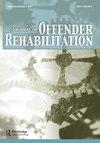Juvenile Second Chance Act Participation in Virginia: Impact on Rearrest, Reconviction, and Reincarceration
IF 1.1
Q3 SOCIAL WORK
引用次数: 0
Abstract
Abstract This study evaluates the recidivism impact of the Tidewater Reentry Initiative (TRI) for medium and high-risk juveniles released from secure statewide facilities. TRI used an intensive case management model combined with in-reach prerelease reentry planning. Impact was assessed using propensity score (PS) weighting in a geographic comparison design. Treatment youth were released from statewide facilities to the Tidewater area of Virginia; comparison youth were released to a comparison area. PSs were used to balance the samples on demographics, current case characteristics, and criminal history. Descriptively, treatment youth showed lower rearrest and reconviction rates at 6, 12, and 24 months following release than comparison youth. Survival analyses examined time to first rearrest, reconviction, and reincarceration, using 6 months to 6 years of follow-up data. Treatment youth were slower to be rearrested and reconvicted, which was significant at the p < .10 level in Cox proportional hazard models. These beneficial effects appear concentrated among the youth released as adults, but formal tests of the interaction were not significant. The intensive case management model seems to have promise to delay recidivism, although high recidivism rates suggest that the model is not intensive enough for high risk youth involved in the juvenile justice system.弗吉尼亚州青少年第二次机会法案的参与:对教养、再定罪和再监禁的影响
摘要本研究评估了潮汐水重返倡议(TRI)对从全州安全设施释放的中高风险青少年的累犯影响。TRI使用了一种密集的病例管理模式,并结合了到达前的重返计划。在地理比较设计中使用倾向得分(PS)加权来评估影响。接受治疗的年轻人被从全州范围的设施释放到弗吉尼亚州的潮汐水域;比较青年被释放到比较地区。PSs用于平衡人口统计、当前案件特征和犯罪史的样本。据描述,接受治疗的年轻人在6岁、12岁和24岁时表现出较低的再感染率和再感染率 释放后数月相比年轻人。生存率分析使用6个月至6年的随访数据,检查了第一次重新捕获、再次捕获和再捕获的时间。接受治疗的年轻人被重新逮捕和重新定罪的速度较慢,这在Cox比例风险模型中在p<.10水平上是显著的。这些有益效果似乎集中在成年释放的年轻人中,但对相互作用的正式测试并不显著。密集型案件管理模式似乎有望推迟累犯,尽管高累犯率表明,该模式对参与少年司法系统的高风险青年来说不够密集。
本文章由计算机程序翻译,如有差异,请以英文原文为准。
求助全文
约1分钟内获得全文
求助全文
来源期刊

Journal of Offender Rehabilitation
SOCIAL WORK-
CiteScore
1.60
自引率
0.00%
发文量
24
期刊介绍:
The Journal of Offender Rehabilitation is a multidisciplinary journal of innovation in research, services and programs in criminal justice and corrections. The journal is an essential professional resource for practitioners, educators and researchers who work with individuals involved in the criminal justice system and study the dynamics of rehabilitation and individual and system change. Original research using qualitative or quantitative methodology, theoretical discussions, evaluations of program outcomes, and state of the science reviews will be considered.
 求助内容:
求助内容: 应助结果提醒方式:
应助结果提醒方式:


